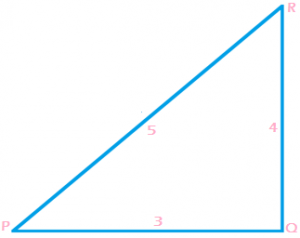Position, Path length and Displacement
Before we learn about Position, Path length and Displacement, let us know what motion is, Earlier we learnt that motion is change in position of an object with time. Everywhere we see objects moving around. Animals go from one place to another in search of food, shelter. River flow, earth completes revolutions around the sun one after the other. Basically motion is everywhere in the universe. What is common to all the instances discussed above? They all change the place when they move from one place to another.
Position: Let us take an object moved from point P to Q. This implies that the position of object starts at P which is moved to Q. How exactly would represent object initial position? In physics we specify a position with the help of a reference point and a set of three mutually perpendicular axis or the rectangular coordinate system. They are X, Y and Z axis. The reference point is taken as the intersection of the above three axis, called Origin. So we take point P as the reference point or origin with coordinated (0, 0, 0) and Q is represented by a set of coordinates on the three axis (X, Y, Z).
But we know that motion is the change in position with time, we install a clock in this system. The coordinate system along with the clock is called as frame of reference. Thus, if one or more coordinates of an object change with time, the body is said to be in motion.
Path length: It is the actual length of the path traversed by the body between Initial and Final position.
Displacement: It is the shortest length i.e. Straight line distance between Initial and Final positions.
Let us three examples here, in the first one, object moving from point P of the square path PQRS with PQ = 1 km. object travels through Q, R, S and comes back to P in 20 minutes. The distance moved by an object is 4 × 1 km = 4 km. But if we see the changes in object position from the start to the end of the journey, it is nil (zero), object started at P and came back at P. In the second example, object moves from P to Q along the straight line in 60 minutes. The distance moved by object is 5km. in fact, the distance from the start to end point is also 5 km.
In the second example, object moves from P to Q along the straight line in 60 minutes. The distance moved by object is 5km. in fact, the distance from the start to end point is also 5 km.![]() Now, in the third example, object moves through the triangular path. It start from P and reaches R through Q in 120 minutes. The distance moved by an object is 3 km + 4 km = 7 km. But if we see how far object is from the point where object starts the journey, it is 5 km.
Now, in the third example, object moves through the triangular path. It start from P and reaches R through Q in 120 minutes. The distance moved by an object is 3 km + 4 km = 7 km. But if we see how far object is from the point where object starts the journey, it is 5 km. We might notice that the distance travelled and the change in position may or may not be the same. The distance travelled by an object is known as the Path Length. Whereas the change in position, that is the difference between the initial and final positions of an object is called its Displacement.
We might notice that the distance travelled and the change in position may or may not be the same. The distance travelled by an object is known as the Path Length. Whereas the change in position, that is the difference between the initial and final positions of an object is called its Displacement.
Thus, in the first example, the path length is 4km but displacement is zero. In the second example, the path length is the same as the displacement i.e. 5 km. In the third example, the path length is 7 km but the displacement is 5 km.
